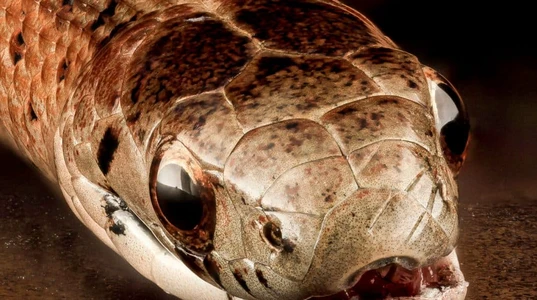Identify & Treating Snake Bites

Bites and Stings

Australia has around 100 venomous snakes — 12 with a bite that can kill
Australia has around 100 venomous snakes - 12 with a bite that can kill, and on average 2 people die annually from venomous snake bites. More deaths would no doubt result if we did not have access to anti-venom to treat these bites. When a snake bite has occurred, it is not necessary to catch or kill the snake in order to identify it. Australia has around 100 venomous snakes — 12 with a bite that can kill. This article summarises some important advice on how to identify snakes and also how to treat bites inflicted by these snakes. The obvious concern with snake bites is determining the species of the snake and understanding whether its bite will be life-threatening. But even when a snake is deemed harmless, its bite can still cause the victim to become infected or suffer severe allergic reaction, including anaphylaxis. This is why First Aiders treat all snake bites as potentially life-threatening and why it's important to call for emergency assistance when someone is bitten.Australia's Venomous Snakes
Australia is well known for having some of the deadliest snakes in the world, capable of causing death from a single bite. Some side effects of a venomous snake bite include:- Paralysis
- Nausea
- Convulsions
- Pain & swelling
Our Most Dangerous Snakes
- Brown Snakes
- Copperhead Snakes
- Death Adders
- Taipans
- Tiger Snakes
- Some Sea Snakes
Snake Venom Detection Kits
A venom detection kit can be used to determine the snake responsible. Venom present on the victim’s clothes or on the skin is all that is needed for the kit. This is why it’s important not to wash the wound or discard clothing after a snake attack. In regard to killing snakes, the following video will help clarify the legal aspects. You'll notice that the speaker in the video makes ready reference to things not always going to plan for people who pick up a shovel aiming to kill a snake.Types of Snake Bites
Snake bites can be 'dry' or 'venomous'. Both of these bites have corresponding symptoms and it's important to remember that even a non-venomous bite could still cause a reaction that can be life threatening if treated incorrectly.Dry Bites
This type of bite involves a snake striking its victim without releasing venom and it’s often painful when the attack occurs. The difficulty with a dry bite is that it’s hard to tell if there’s venom present. Some of the other symptoms that result from a dry bite are swelling and redness. While the skin may be punctured, this type of snake bite doesn’t require anti-venom. As previously mentioned, even with a dry bite, call 000 — treat it as a medical emergency in case of complications, such as an infection or anaphylaxis.Venomous Bites
Unlike a dry bite, a venomous snake bite involves a snake strike with venom (poison) being released. The venom in a snake bite has poisons that have the capacity to either numb, stun, or even kill another creature.Symptoms of Venomous Snake Bite
- Bleeding
- Swelling & bruising
- Severe pain, either immediate or gradual
- Bite marks present on the skin, ranging from small scratches to deeper puncture wounds
- Anxiety
- Nausea & vomiting
- Blurred vision & dizziness
- Glands in the region of the armpit or groin where the bite has occurred becoming either swollen or tender
- Difficulty breathing or swallowing
- Headache, feelings of confusion, or stomach pain
- Blood at the site of the wound or on the gums
- Coma or death
- Paralysis
- Skin is either tingling, burning or stinging
- Heartbeat becomes irregular
First Aid treatment for Snake Bite
For all types of snake bites, First Aid always regards it as an emergency. Call 000 for an ambulance and always be prepared to provide cardiopulmonary resuscitation (CPR) as necessary. Where the snake bite has been to a limb, hand, or foot, apply a pressure immobilisation bandage. For areas of the body where a pressure bandage cannot be applied, make sure you maintain firm pressure — this is vital to help stop venom circulating throughout the body. Applying a pressure immobilisation bandage:- Place the pressure bandage over the bite. Make sure it’s tight, so you can’t slip a finger between the bandage and the skin.
- After placing the pressure bandage over the bite, use either an elasticised roller or crepe bandage to wrap the rest of the limb. Start above the fingers or toes, depending on which limb is involved, and continue until you reach the body.
- Mark the spot where the bite occurred on the bandage with a pen or felt-tip marker.
- Help the victim remain as relaxed as possible and try to ensure they do not move around.
- Difficulty talking or breathing
- Vomiting, nausea or abdominal pain
- Coughing or wheezing
- Throat swelling or tightness
- Swelling of the tongue
- Pale or clammy skin
How to Avoid Snake Bites
A large number of cases in Australia involve people who have been bitten while trying to either capture or kill a snake. When you see a snake, if you back away it will generally go on its way, leaving you alone. Not surprisingly, snakes are more likely to attack in self defence. Let sleeping snakes lie.Recommended Resources
More information about snakes common to the greater Brisbane area can be found in our Resource Library.
Originally published at
https://www.australiawidefirstaid.com.au/resources/first-aid-for-snake-bites
as part of the Australia Wide First Aid Articles Library









